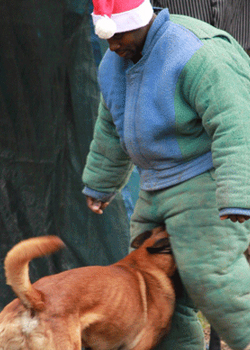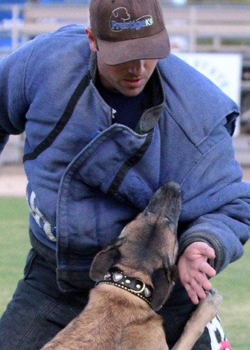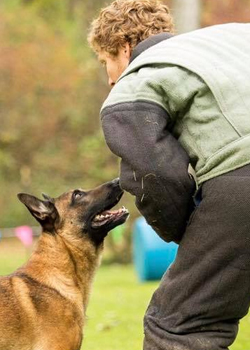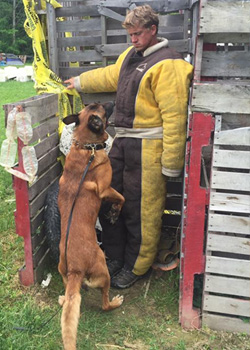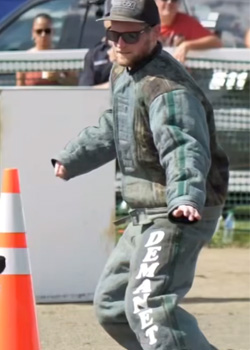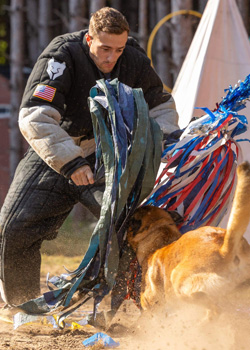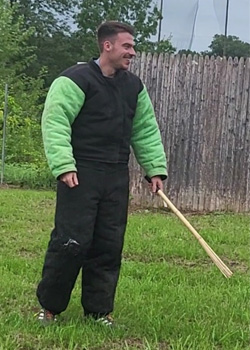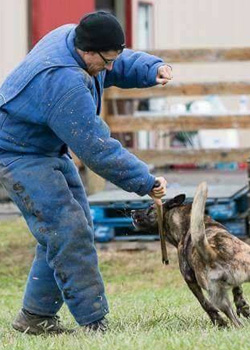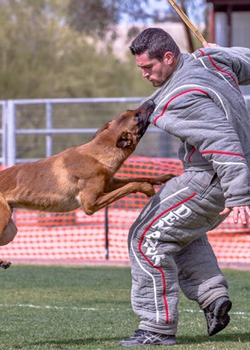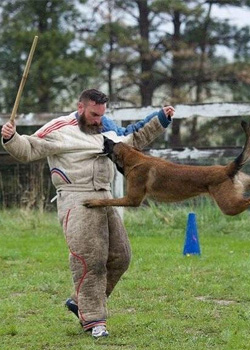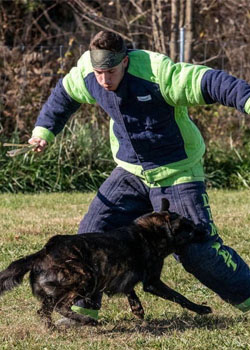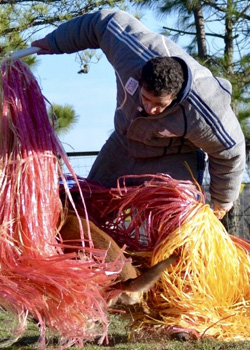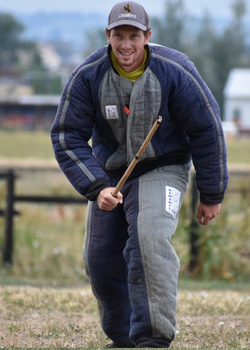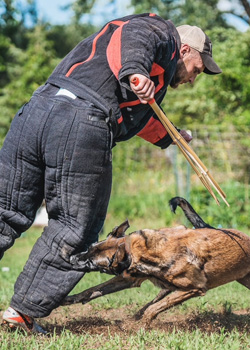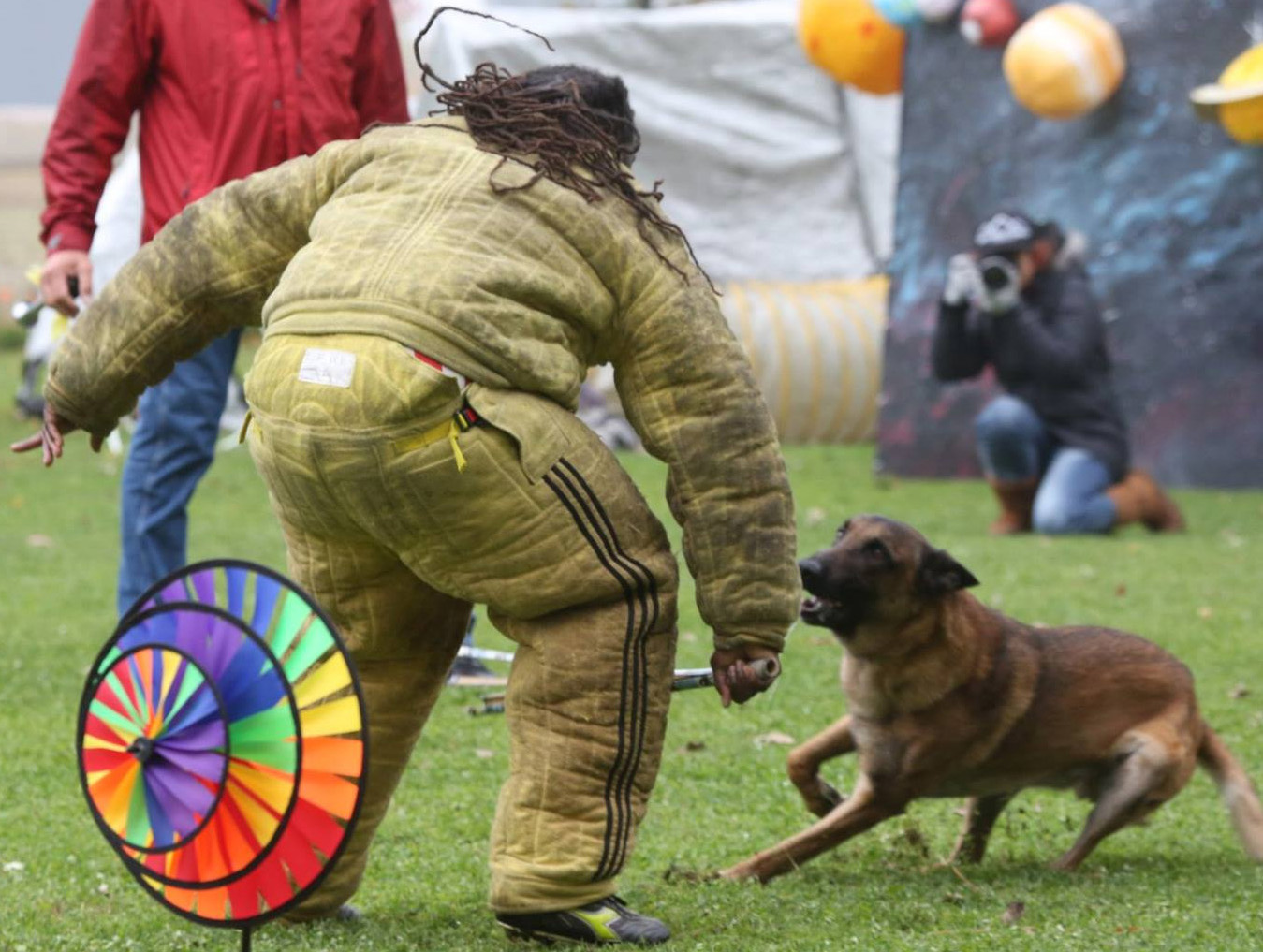
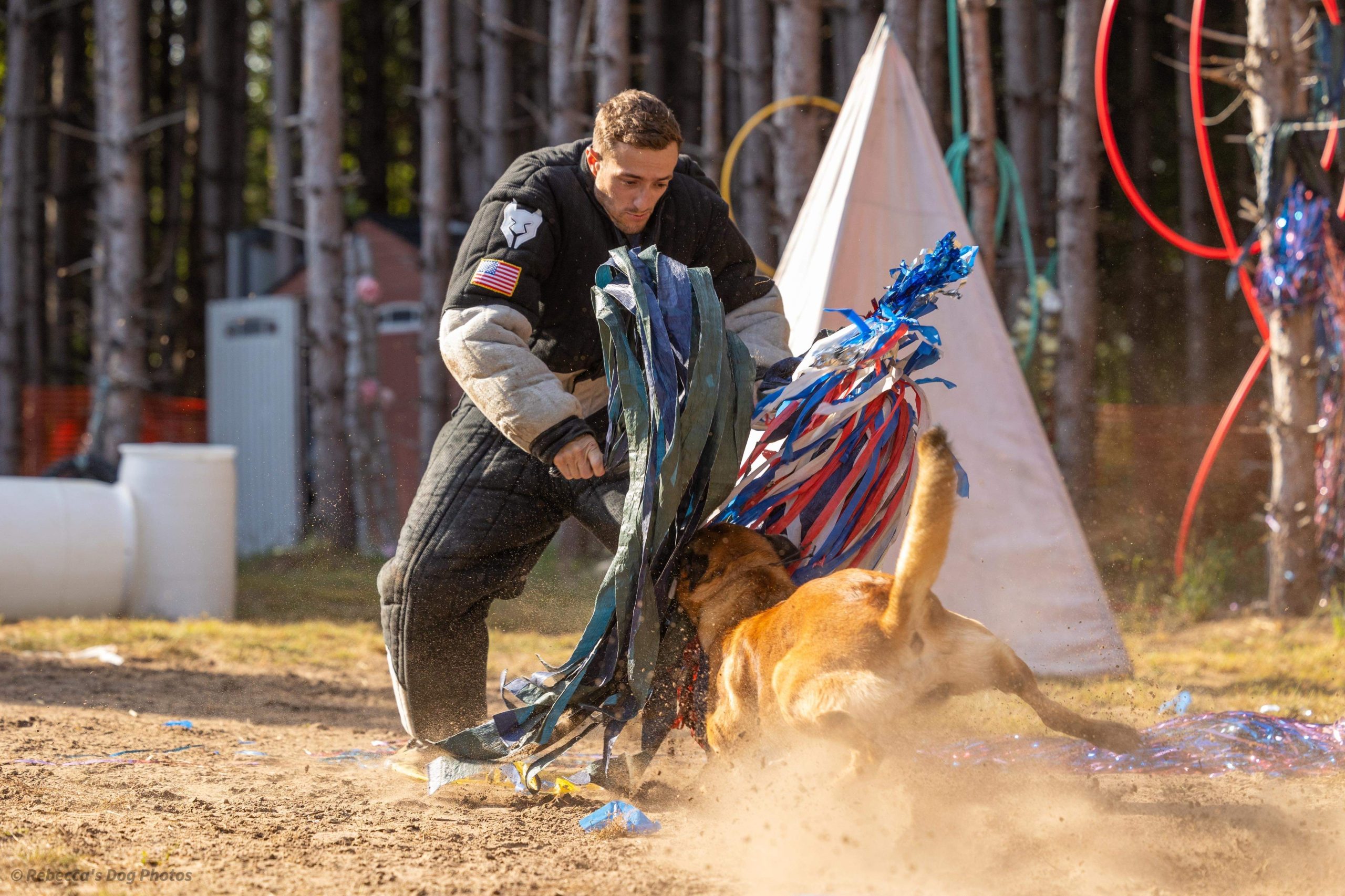
|
CAMP |
October 24, 2024, October 25, 2024 in Franklinville, NJ Contact Alfredo Miranda at info@Fearlessringsport.com DECOY TRAINING CAMP Anthony Sagstetter |
|
CERT |
October 27, 2024 in Franklinville, NJ (Adjacent Trial) Contact Alfredo Miranda at info@Fearlessringsport.com Jury for Certification: Judge Mahogany Gamble Decoy Committee Member Tony Sagstetter Decoy(s): Paul Salveson |
|
CERT |
November 1, 2024 in Erie, CO (Adjacent Trial) Contact Paul Salveson at p.salveson@yahoo.com Jury for Certification: Judge Don Lee Decoy Committee Member Paul Salveson Decoy(s): Joey Morris |
|
CERT |
November 7, 2024 in West Park, NY (Adjacent Trial) Contact Joel Clercq at (914) 400-5434 joel@clercqdogsport.com Jury for Certification: Judge Margaret McKenna Decoy Committee Member Jordon Hill Decoy(s): Matteo Chiotti |
| Sorted by surname | City/State | Certified Through | Level | Contact |
|---|---|---|---|---|
| Carlos Aguirre | Chicago, IL | September 13, 2029 | Level 2 | carlos@wolfslairk9.com 847-691-7088 |
| Kevin Bain | San Antonio, TX | September 15, 2028 | Level 3 | baink9@gmail.com 210-601-3571 |
| Spencer Bowman | Castle Rock, CO | June 26, 2027 | Level 2 | spencer@prestigek9.com |
| David Broderick | Payson, UT | October 5, 2025 | Level 3 | davidbrodericksr@gmail.com |
| Chad Byerly | Columbus, OH | November 15, 2025 | Level 1 | 614-208-6531 |
| Joel Clercq | Rhinebeck, NY | November 30, 2024 | Level 3 | joelclercqk9@gmail.com (914) 400-5434 |
| Todd Dunlap | Hadley, PA | June 5, 2027 | Level 1 | toddunlap80@gmail.com (724) 253-1123 |
| Jake Faas | Minneapolis, MN | April 15, 2024 (EXP) | Level 2 | faasjake@gmail.com (651) 214-1363 |
| Kellen Freeman | Redding, CT | September 8, 2028 | Level 1 | castlehillk9@gmail.com |
| Ethan Hilgemann | Rochester, MN | June 29, 2029 | Level 2 | ejhilgemann@hotmail.com (605) 290-1312 |
| Jordon Hill | Hyde Park, NY | October 15, 2028 | Level 3 | jhill2221@gmail.com |
| Zack Kiser | Riverside, CA | October 15, 2028 | Level 3 | zack.kiser7@gmail.com (760) 571-3883 |
| George Manley | Louisville, KY | September 13, 2029 | Level 1 | george.manley@gmail.com (502) 619-4731 |
| Thomas Martin | Minneapolis, MN | June 29, 2029 | Level 2 | thomasjmartin1223@gmail.com (651) 788-5290 |
| Francois Massart | Temecula, CA | October 9, 2027 | Level 3 | 951-772-1507 |
| Desi Michael | Franktown, CO Port St Lucie, FL |
October 9, 2026 | Level 3 | (720) 266-3848 |
| Joey Morris | Wentzville, MO | October 2, 2027 | Level 2 | lifetimecanine@gmail.com (314) 808-6565 |
| Jesse Rodriguez | Los Angeles, CA | June 29, 2029 | Level 1 | jesse@raddogtraining.com |
| HB Ryan | Tulsa, OK | December 11, 2027 | Level 2 | (618) 645-0135 |
| Anthony Sagstetter | Houston, TX | September 13, 2029 | Level 2 | (614) 917-9489 |
| Paul Salveson | Laramie, WY | September 11, 2027 | Level 2 | p.salveson@yahoo.com |
| Chris Toman | Chicago, IL | September 13, 2029 | Level 1 | dogjitsutraining@gmail.com (224) 234-4039 |
| Ben Tompkins | Hadley, PA | September 13, 2029 | Level 1 | (213) 610-3915 |
| Nathan Wathey | New Albany, OH | June 5, 2027 | Level 1 | nwathey90@gmail.com (330) 843-2988 |
| Joey Zohn | Seattle, WA | June 29, 2029 | Level 1 | josephzohn415@gmail.com (206) 914-5756 |
Chicago, IL
Level 2 through September 13, 2029
carlos@wolfslairk9.com
847-691-7088
Kevin Bain
San Antonio, TX
Level 3 through September 15, 2028
baink9@gmail.com
210-601-3571
Spencer Bowman
Castle Rock, CO
Level 2 through June 26, 2027
spencer@prestigek9.com
David Broderick
Payson, UT
Level 3 through October 5, 2025
davidbrodericksr@gmail.com
Chad Byerly
Columbus, OH
Level 1 through November 15, 2025
614-208-6531
Joel Clercq
Rhinebeck, NY
Level 3 through November 30, 2024
joelclercqk9@gmail.com
(914) 400-5434
Todd Dunlap
Hadley, PA
Level 1 through June 5, 2027
toddunlap80@gmail.com
(724) 253-1123
Jake Faas
Minneapolis, MN
Level 2 through April 15, 2024 (EXP)
faasjake@gmail.com
(651) 214-1363
Kellen Freeman
Redding, CT
Level 1 through September 8, 2028
castlehillk9@gmail.com
Ethan Hilgemann
Rochester, MN
Level 2 through June 29, 2029
ejhilgemann@hotmail.com
(605) 290-1312
Jordon Hill
Hyde Park, NY
Level 3 through October 15, 2028
jhill2221@gmail.com
Zack Kiser
Riverside, CA
Level 3 through October 15, 2028
zack.kiser7@gmail.com
(760) 571-3883
George Manley
Louisville, KY
Level 1 through September 13, 2029
george.manley@gmail.com
(502) 619-4731
Thomas Martin
Minneapolis, MN
Level 2 through June 29, 2029
thomasjmartin1223@gmail.com
(651) 788-5290
Francois Massart
Temecula, CA
Level 3 through October 9, 2027
951-772-1507
Desi Michael
Franktown, CO
Port St Lucie, FL
Level 3 through October 9, 2026
(720) 266-3848
Joey Morris
Wentzville, MO
Level 2 through October 2, 2027
lifetimecanine@gmail.com
(314) 808-6565
Jesse Rodriguez
Los Angeles, CA
Level 1 through June 29, 2029
jesse@raddogtraining.com
HB Ryan
Tulsa, OK
Level 2 through December 11, 2027
(618) 645-0135
Anthony Sagstetter
Houston, TX
Level 2 through September 13, 2029
(614) 917-9489
Paul Salveson
Laramie, WY
Level 2 through September 11, 2027
p.salveson@yahoo.com
Chris Toman
Chicago, IL
Level 1 through September 13, 2029
dogjitsutraining@gmail.com
(224) 234-4039
Ben Tompkins
Hadley, PA
Level 1 through September 13, 2029
(213) 610-3915
Nathan Wathey
New Albany, OH
Level 1 through June 5, 2027
nwathey90@gmail.com
(330) 843-2988
Joey Zohn
Seattle, WA
Level 1 through June 29, 2029
josephzohn415@gmail.com
(206) 914-5756
The Evolution of the Mondioring Decoy
Francis Metcalf
By combining various European dog sport traditions, Mondioring decoys have developed their own system of suit work. Much effort has been put into the Mondioring rule book to guide decoys from different dog sports into developing a uniform decoy system. The Mondioring system allows the decoy to use a wide array of stressors to assist the judge in evaluating the dog’s working ability. The simplicity of the trial rules allow the decoy to remain true to the core values of dog sport, to test the inborn character of the dog, and the quality of the dog’s education. However, the Mondioring program goes a step further by aiding the judge and decoy in evaluating the dog’s over-all adaptability in changing circumstances. In this article, I will describe the various influences on Mondioring decoy work and the development of Mondioring’s own unique tradition.
A Level Playing Field
In order to understand the concepts behind Mondioring decoy work, it is essential to understand the multiple traditions that came together to create Mondioring. The Mondioring founders combined elements from French Ring, Belgian Ring, and Campagne into one sport that can serve as a level playing field for dogs from all systems including, IPO and KNPV. In order to bring a competition based on the Ring Sport tradition to the world stage, the founders of Mondioring added rules that would ensure fairness and safety, and allow sleeve-trained dogs to have an arm presentation at the Mondioring one level.
Some of the compromises that affect the decoy include prohibiting the decoy from esquiving (dodging) the dog on entry and striking the dog with the baton. These compromises remain controversial. However, rather than seeing them as limitations on the decoy’s ability to perform his test, I see these rules as an enhancement to the consistency of the test.
By prohibiting the esquive on entry, you are encouraging the decoy to remain on task and face the dog, rather than trying to escape and avoid the charging animal. By encouraging the decoy to stand and fight, the Mondioring decoy is adhering to the core principle of the exercise, which is to test the dog’s courage, not to test his reflexes. Since the Mondioring decoy is prohibited from hitting the dog with the baton, he is forced to find other methods of intimidation rather than repetitive baton blows. The Mondioring decoy must learn to probe the dog’s character using only his knowledge of dog behavior and his force of character. The Ring Sport decoy is all too often accused of crossing the line from testing to abuse. Since the Mondioring decoy has voluntarily given up the use of baton strikes during public expositions, he ensures the good name of the sport and its participants.
Founding Traditions
Campagne
The word Campagne literally means “country.” The sport has acquired this name to articulate the environment in which it is played. The Campagne program never takes place on an official ring field. Instead, the competition is held in a rural environment. Campagne utilizes elements of the landscape to provide difficulties that the dog will encounter. The basic thesis of the Campagne program is to never use any elements that have been developed on the Ring field proper, but rather to use natural elements found in the environment. Campagne dogs are asked to swim through rivers, search forests, and jump over pasture fences in pursuit of the villain.
Campagne practitioners have developed the use of a trial theme, which is used to give context to the competition. For example, if the trial is to take place in a pastoral setting, the theme of the entire trial might draw from the daily lives of people in farming communities. All aspects of the competition, from agility to protection, will incorporate elements from the chosen theme. From the theme, the judge derives scenarios to choreograph the decoy and handler into an exchange that mimics real-life situations. While theme and scenario run through the entire program, the use of scenario is most important to the Defense of Handler exercise. During the Defense, the decoy must follow certain procedures that are constant and never changing, such as the friendly meeting of handler and decoy and the eventual attack on the handler by the decoy. The scenario comes to life through the judge’s arrangement of variables. The variables are almost limitless in their expression, but once the variables are set for the particular trial, they must remain the same for each dog in the competition. Every competition uses different variables, and thus the Campagne dogs ability to adapt is tested over time. In a quest to bring the difficulties of the Campagne tradition to the Mondioring field, the founders of Mondioring have borrowed many elements from the Campagne decoy. Both systems utilize theme and scenario. Both systems utilize accessories in the Face Attack and obstacles on the Escort. By adding a second decoy, the variables in the Mondioring Defense of Handler are increased. While Mondioring derived its Defense of Handler from Campagne, the Mondioring program has developed this exercise to a greater extent than its ancestors. In my analysis, the Mondioring decoy and the Campagne decoy have more in common than decoys in any other sport.
Belgian Ring
The similarities between Belgian Ring and Mondioring have less to do with the decoy’s work and more to do with the obedience phase of the trial. Since this article focuses on the bite work exercises, some of the major similarities between Mondioring and Belgian Ring will not be discussed. Belgian Ring and Mondioring are similar in the use of the obstacle in the Face Attack, but in Mondioring, the decoy is expected to barrage the dog with his baton and then vigorously defend himself from the attacking dog. The Belgian Ring decoy works the dog methodically to allow the judge to view the quality of the grip while the dog is being stressed by choreographed environmental events. The Belgian Ring decoy wears a costume that has jute cuffs on the arms and legs. The jute bite surface is more advantageous to the dog when trying to fill his mouth compared to the Linen costumes worn by Mondio decoys. The jute cuffs allows the dog’s bite quality to be showcased. The jute on the Belgian suit also slows the decoy down by making movement more difficult. The Mondioring rules specifically state that the decoy should be active and realistic. This comment I believe is aimed at decoys from the Belgian tradition who work in a much calmer fashion than Mondio or French Ring decoys.
Belgian Ring and Mondioring both use environmental factors to test the dog, but in different ways. In Belgian Ring, stress is calculated by watching how certain environmental events effect the animal’s bite quality, while in Mondioring, environmental stress is applied primarily in the Defense of Handler scenario and manifests itself by causing confusion and conflict. One sees this confusion and conflict affecting the dog’s ability to focus and respond to cues. Unlike Belgian Ring, Mondioring has no point deduction for bite quality, but the decoy is expected to test the proficiency of the bite by fighting the dog as if he is not wearing protection. Both Belgian Ring and Mondioring utilize obstacles on the Face Attack. Belgian Ring obstacles are typically more elaborate than Mondioring obstacles. This is because Belgian Ring relies on the obstacle as the sole stressor in the Face Attack and Mondioring divides the use of stressors between the obstacle and the decoy. In Belgian Ring, if the dog goes around the obstacle, the decoy is allowed to esquive the dog. Once the dog has bitten, the decoy becomes passive and allows the judge to evaluate the dog’s grip. The Mondioring dog incurs severe point loss for going around the obstacle, but the decoy is not allowed to esquive on entry. Instead the Mondioring decoy must use his baton or accessory to barrage the dog and keep him from biting. If the Mondioring dog bites and then loses his grip, the decoy is allowed to esquive the dog.
Belgian and Mondioring share many partial similarities. Both systems use other hiding spots besides the traditional blind for the Search and Escort exercise. Both systems use the accessory on the Object Guard and the obstacle on the Face Attack. However, during these exercises there are key differences between the two sports. The Belgian Ring Escort gives the judge another view of the dog’s bite quality, while the Mondioring escort tests the dog’s vigilance. The Belgian Ring decoy must always present an arm and a leg for the attacking dog. The Mondioring decoy is instructed never to present a target for the dog, but rather to behave as if he were not wearing protective gear and fight the dog off. The decoy’s behavior during the Object Guard in Belgian Ring is aimed more at seeing if the dog will defend his object, while the Mondioring Decoy behaves more like a French Ring decoy and uses cinematic behavior to try and steal the object. One can almost think of Mondioring as a combination of Campagne decoys working on a Belgian Ring field.
French Ring
French Ring is the largest and most competitive of all the founding traditions of Mondioring. The French Ring program specializes in selecting dogs through decoy pressure. The use of the esquive in French Ring is a technique that allows the decoy to slow the entry of the dog. The dog, once deprived of his velocity by missing the initial bite, is then forced to face the decoy without the aid of inertia. The French Ring decoy is a specialist in the use of the baton. His exquisite timing in barrage and esquive techniques allow him to peer deep into the animal’s character. By prohibiting the decoy to esquive and hit the dog with the stick, Mondioring has distanced itself from French Ring. By switching from hits with the baton to the accessory, the Mondioring decoy causes maximum amount of mental stress on the dog and the minimum amount of physical stress. Just like French Ring, the Mondioring decoy is required to use barrage and lifelike movements to defend himself from the attacking dog. If, after biting on the entry, the dog lets go, the decoy is allowed to use esquive, barrage, tricks, and menaces to keep the dog from biting and thus test the animal’s resolve.
In Mondioring the obstacle is designed to do the job of the esquive in French Ring. As the dog approaches the obstacle, he is forced to alter his gait and navigate the obstacle. Once the dog has landed, he is confronted with a decoy wielding either a baton or accessory. Since the decoy risks behaving differently from one dog to another while attempting to esquive, using inanimate objects to break the dog’s entry speed lends an air of impartiality to testing the dogs. The French Ring judge relies solely on his decoy’s ability to help him evaluate the dogs. Mondioring is not so heavily centered around the decoy as French Ring. While the Mondioring decoy plays an important role, the environmental factors arranged by the judge and the difficulty of the scenarios have a strong effect on the outcome of the trial.
Even though the Mondioring program has seemingly borrowed more from the sports of Campagne and Belgian Ring than French Ring, a similarity remains that is very important. This similarity is the use of increasing levels of difficulty throughout the echelons. French Ring and Mondioring share the use of the Brevet as an entry test and then progress through echelons one, two, and three gradually increasing the number and difficulty of the exercises. Both Campagne and Belgian Ring jump right into the whole Ring Three program, making these sports less accessible than French or Mondioring. The Mondioring program was specifically designed not to conflict with the French Ring program, so that trainers could easily compete in both sports with little extra training.
Conclusion
Mondioring’s detractors cite as the sport’s weaknesses the regulations that prohibits esquive and stick hits. We will be better able to evaluate the removal of these two techniques on the selective process when we access the future generations of dogs produced by
Mondioring. It is my position that the removal of stick hits and esquive on entry will not have a significant impact on the character or working ability seen in subsequent generations of Mondioring dogs. I believe the addition of the accessory, changing environment, and scenario will have greater selective effect than the removal of esquive and stick hits. Environmental stability is of more practical importance to a working dog than entry speed. Moreover, the Mondioring accessory makes up for the use of stick hits as a testing device.
Besides viewing dog sports as a breeding test for working dogs, one can make an assessment based on which sport is more entertaining to compete in–and train for. Mondioring’s use of variation makes it a clear choice for me. Anyone who has trained a dog in the higher levels of any sport can confirm that, after you do your foundation work, you spend most of your training time polishing details. If these details become boring for you or the dog, they take fun out of your experience. The same thing is true for the decoy. But since the Mondioring training decoy is responsible for providing a well-rounded foundation by constantly exposing the dog to new training environments, these variations can be a breath of fresh air for decoys and trainers tired of the minutia of their sport.
Mondioring is the latest evolution of the Ring Sport tradition, as this tradition evolves, I am convinced that the Mondioring decoy will perform with fairness and selectivity to create the working dogs of the future.

